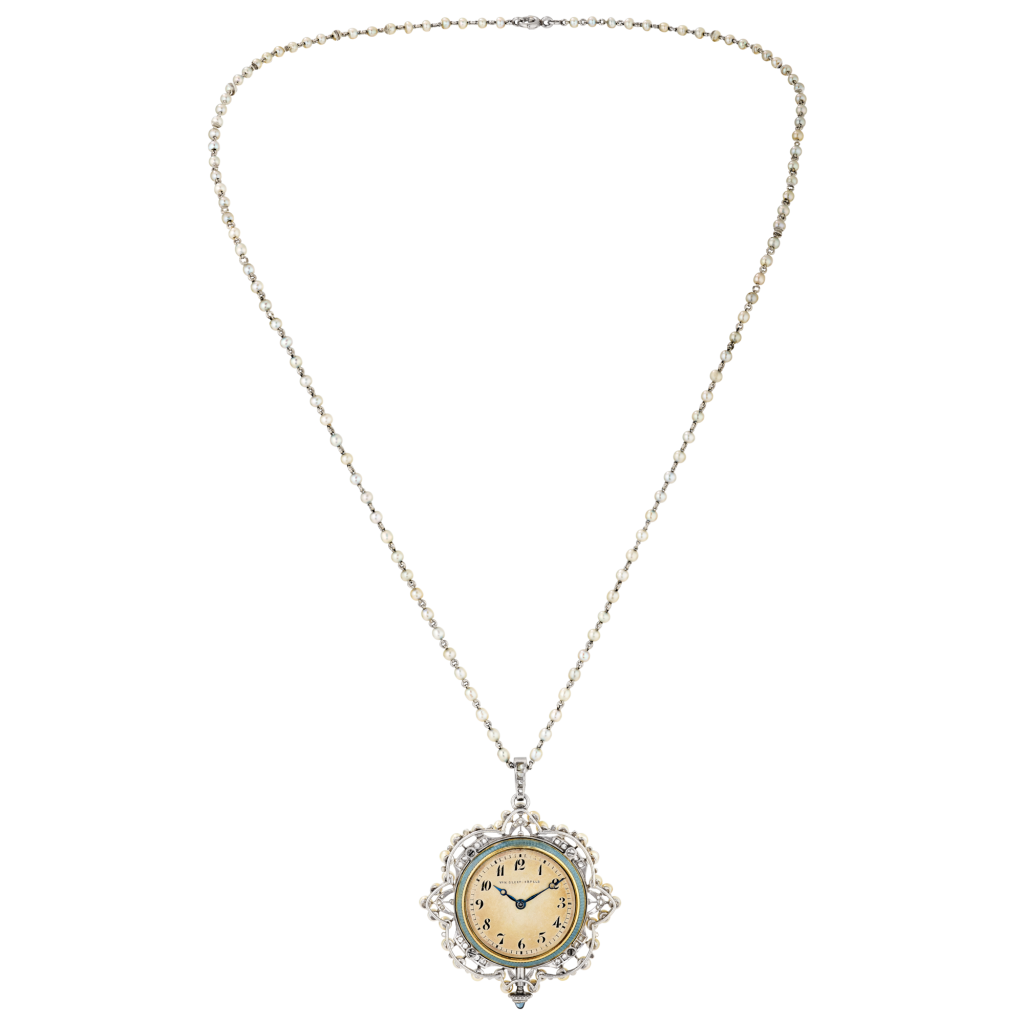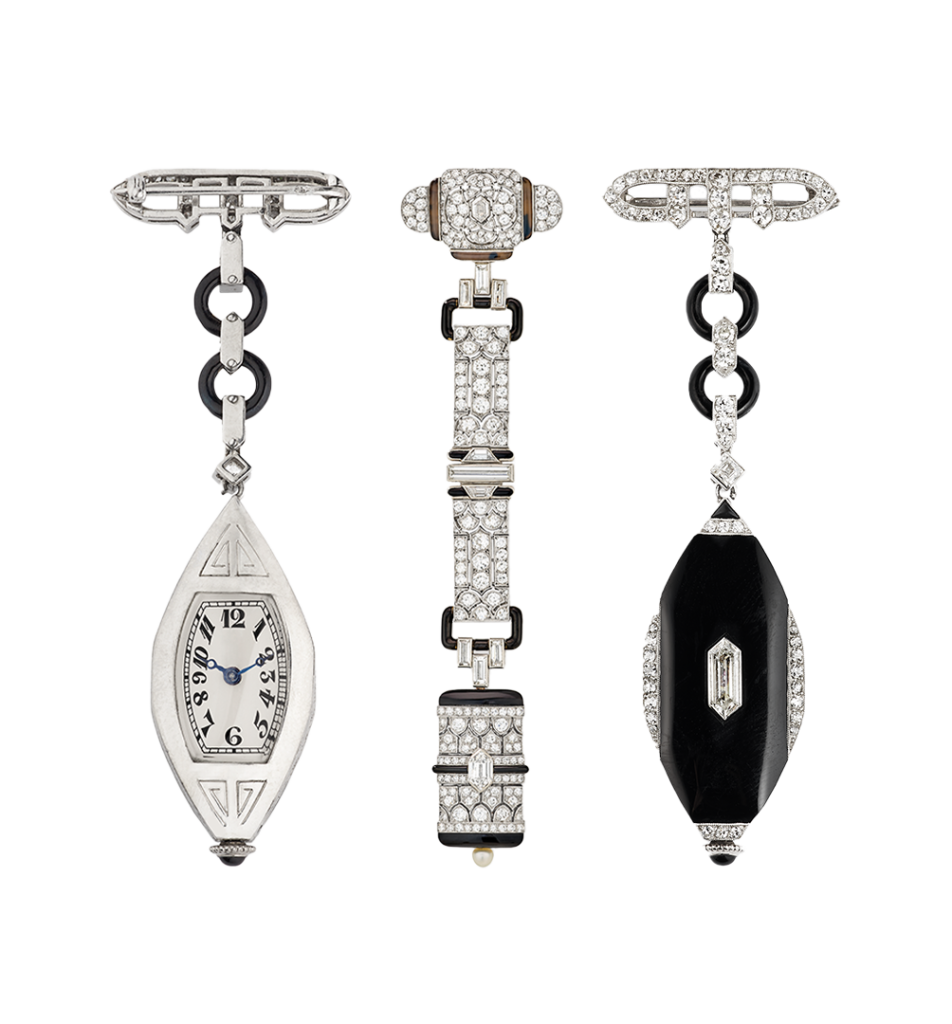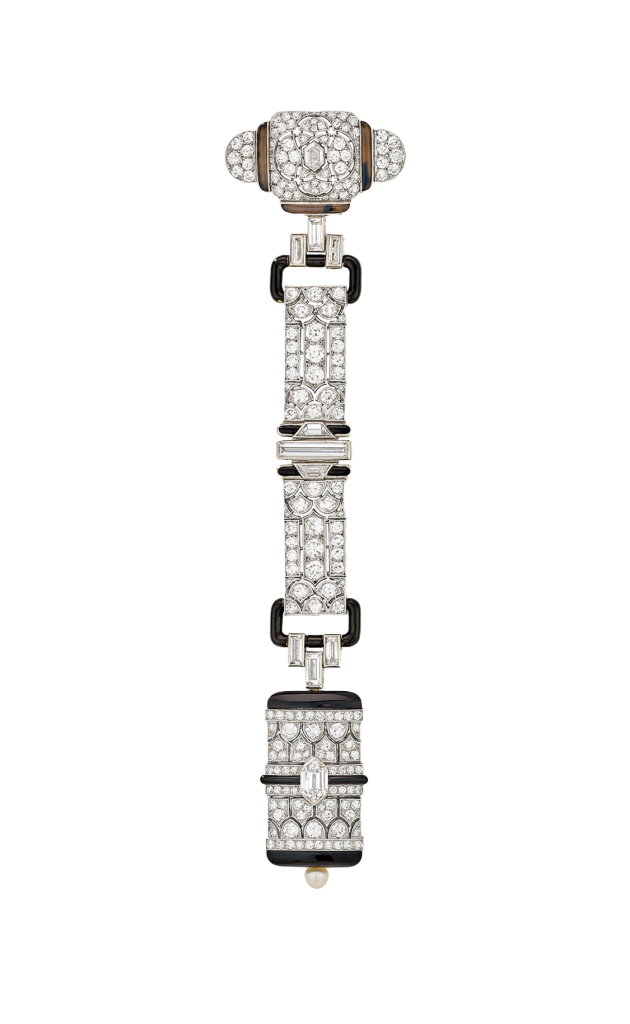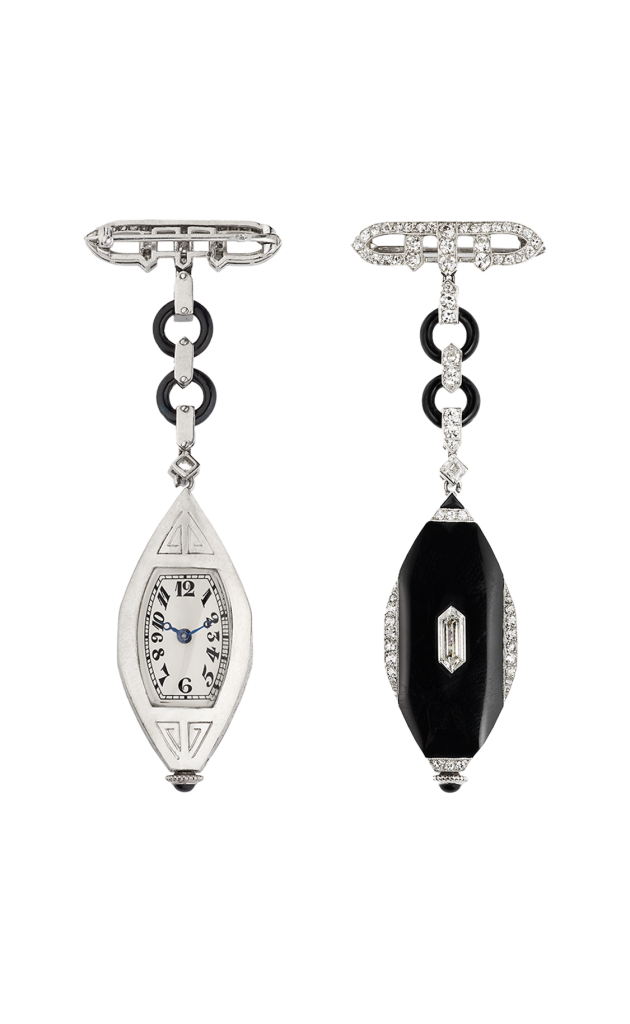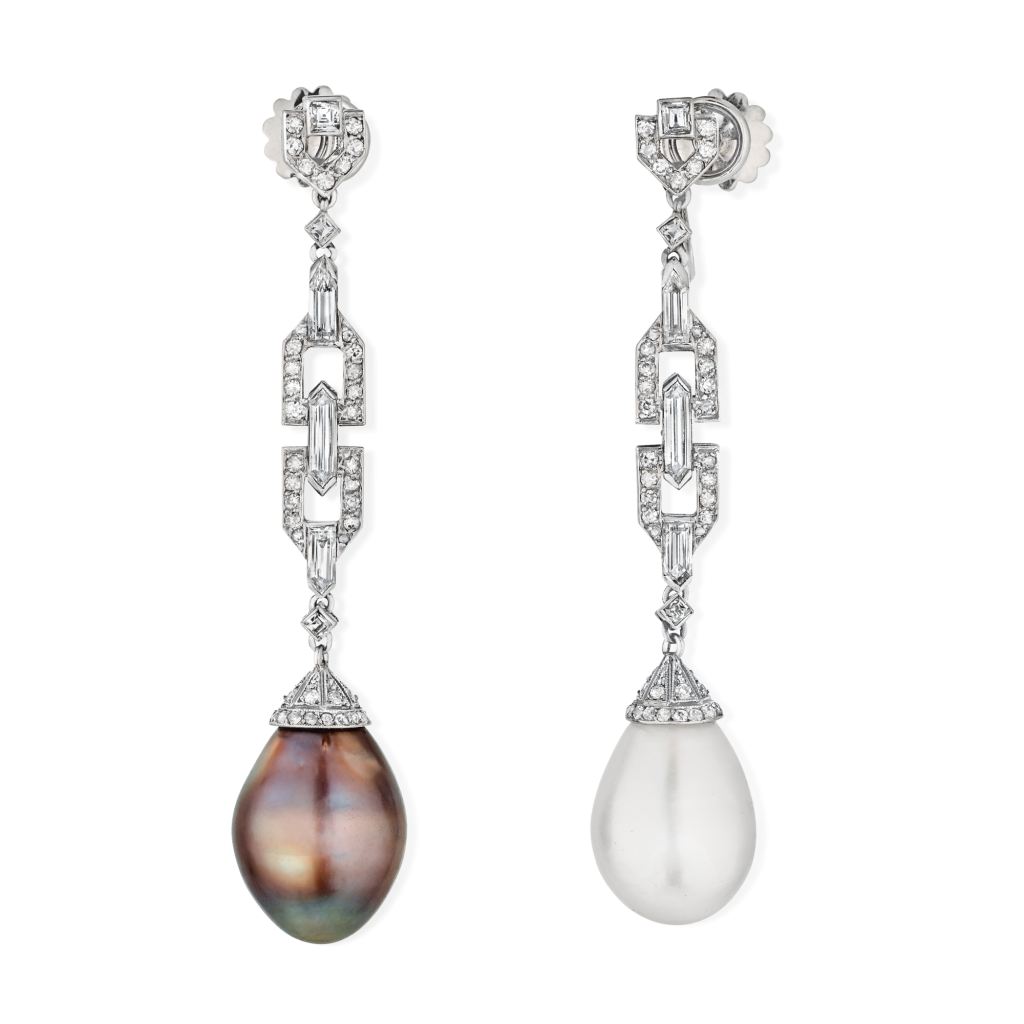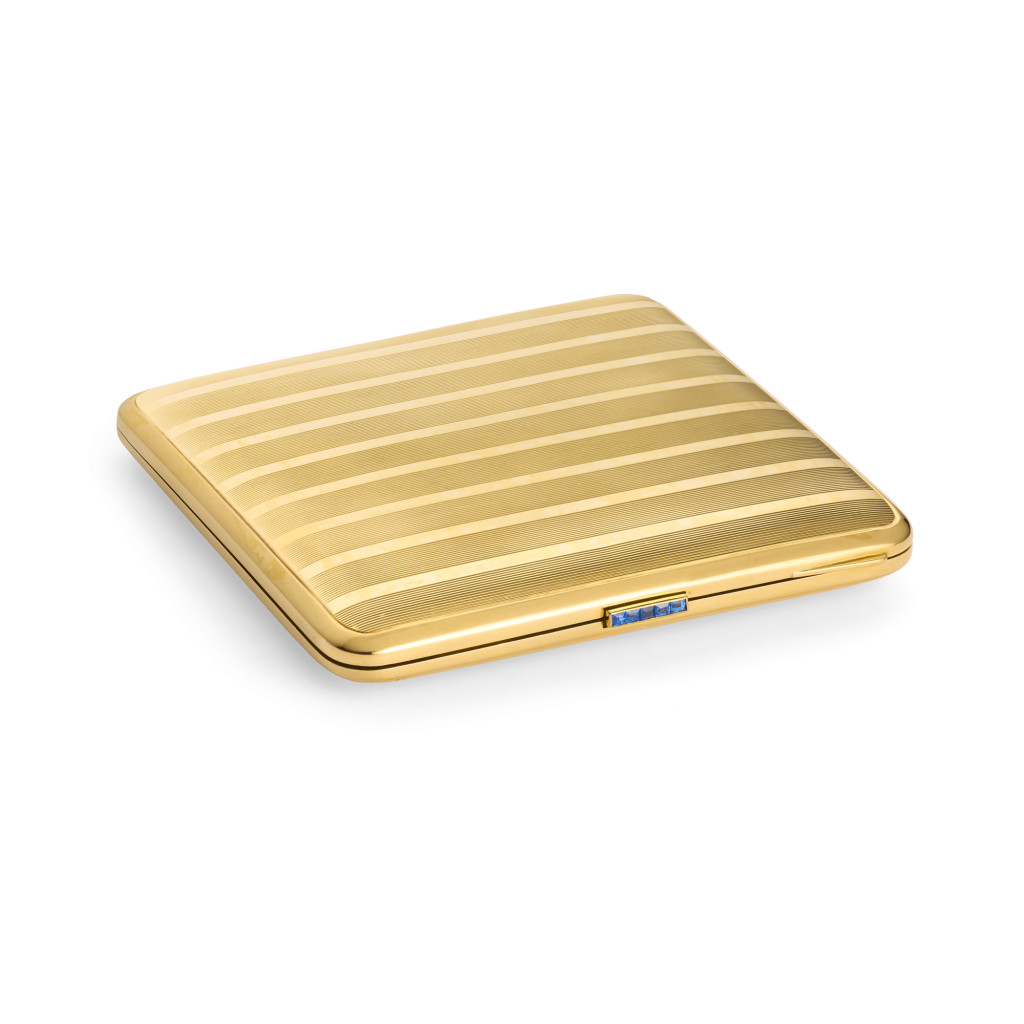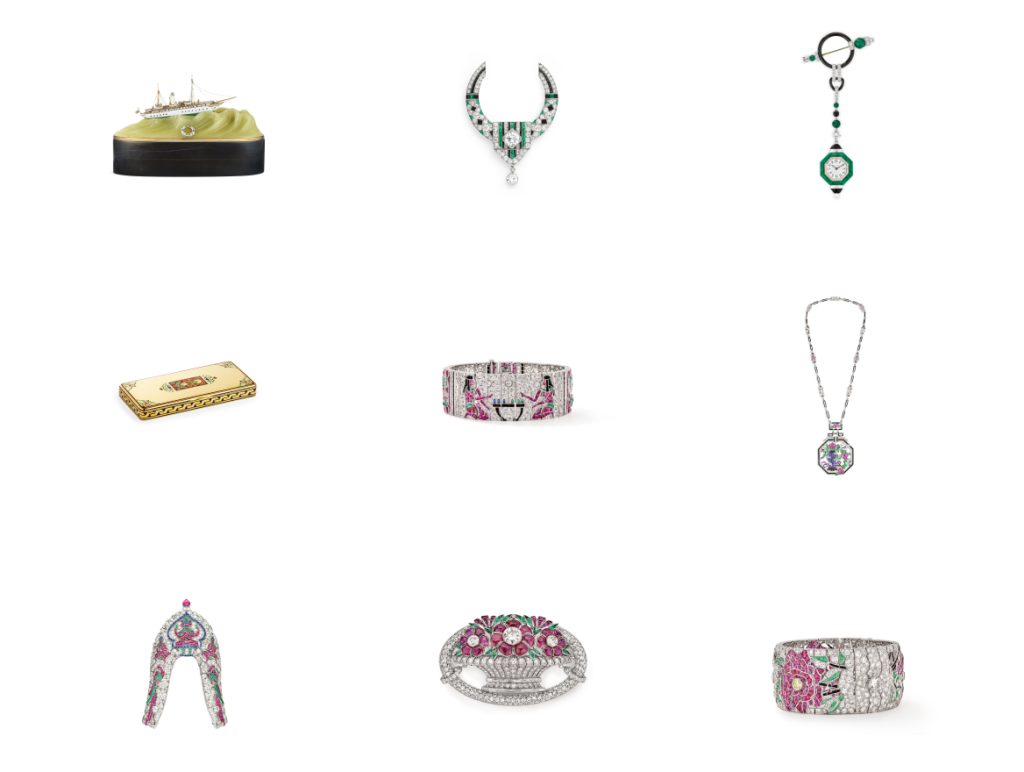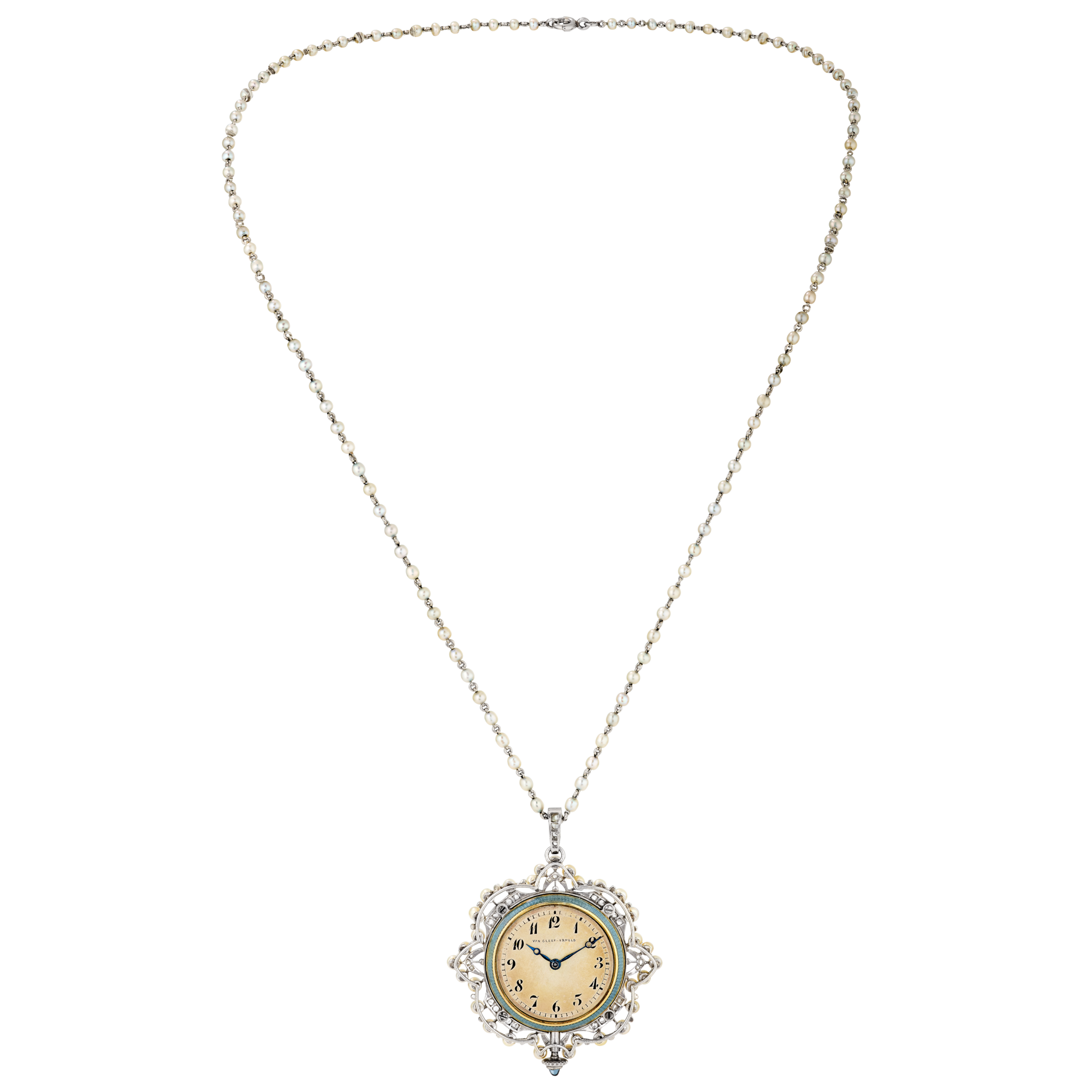
Pendant watch

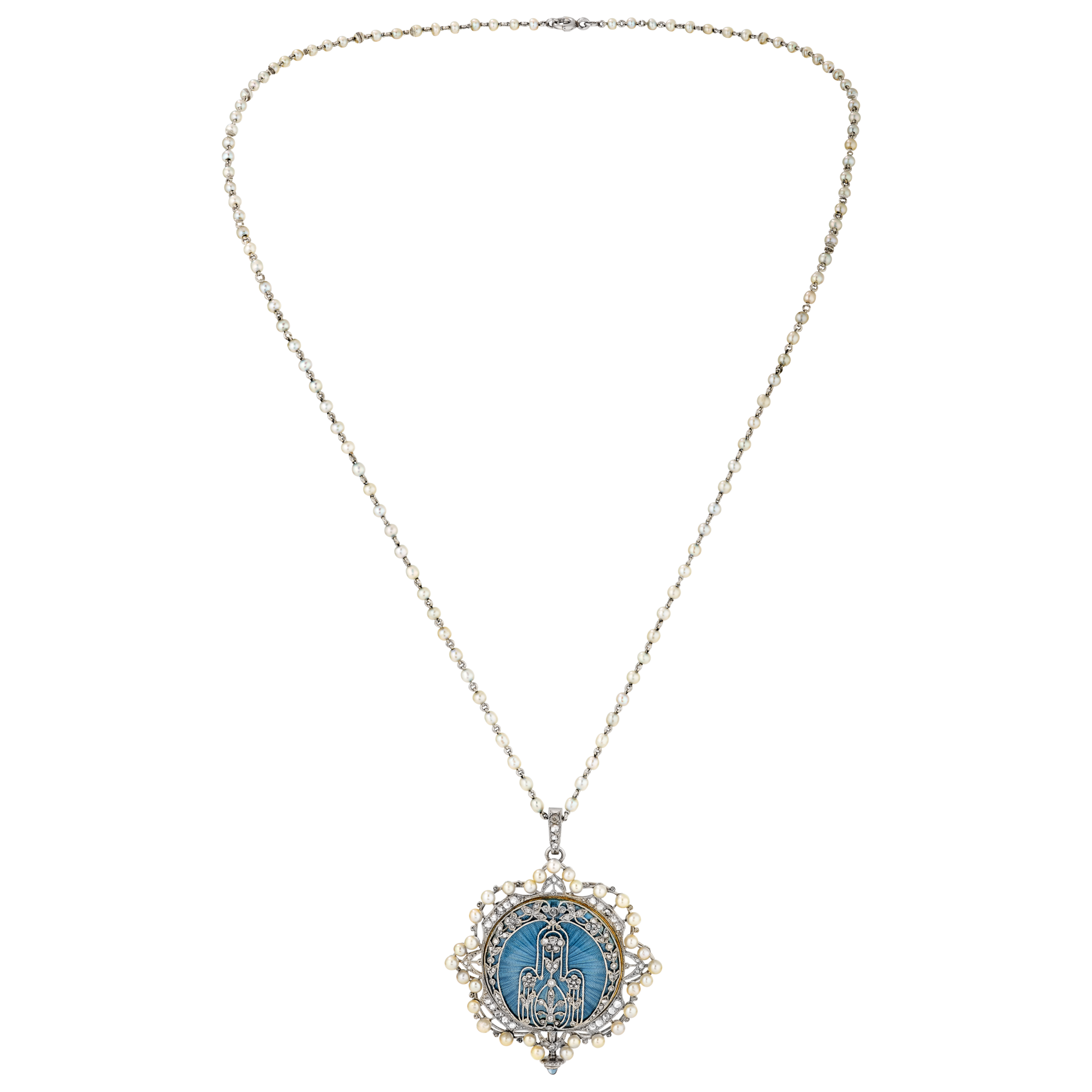
Creation details
- Creation year 1912
- Usage Watch
- Dimensions 270 × 37.5 mm
The period from 1905 to 1912 marked the transition from Art Nouveau to Art Deco. This period was also typified by consistent reference to the eighteenth century and the culmination of a particular style of jewelry : the so-called “garland” style, as seen in this pendant watch from 1912, composed of a chain of alternating platinum links and natural white pearls, and a circular watch.
The back of the watch, itself of blue guilloché enamel, is adorned with an ornamental motif in platinum and rose-cut diamonds. A row of open scrollwork highlights the contour of the blue enamel and frames a central motif composed of foliate lines of precious stones and delicate platinum threads. Lastly, a lace-like frieze set with diamonds as well as white pearls outlines the exterior of the watch. As for the watch’s crown, it is adorned with a blue enamel cabochon on top of a double row of diamonds.
A taste for the 18th century
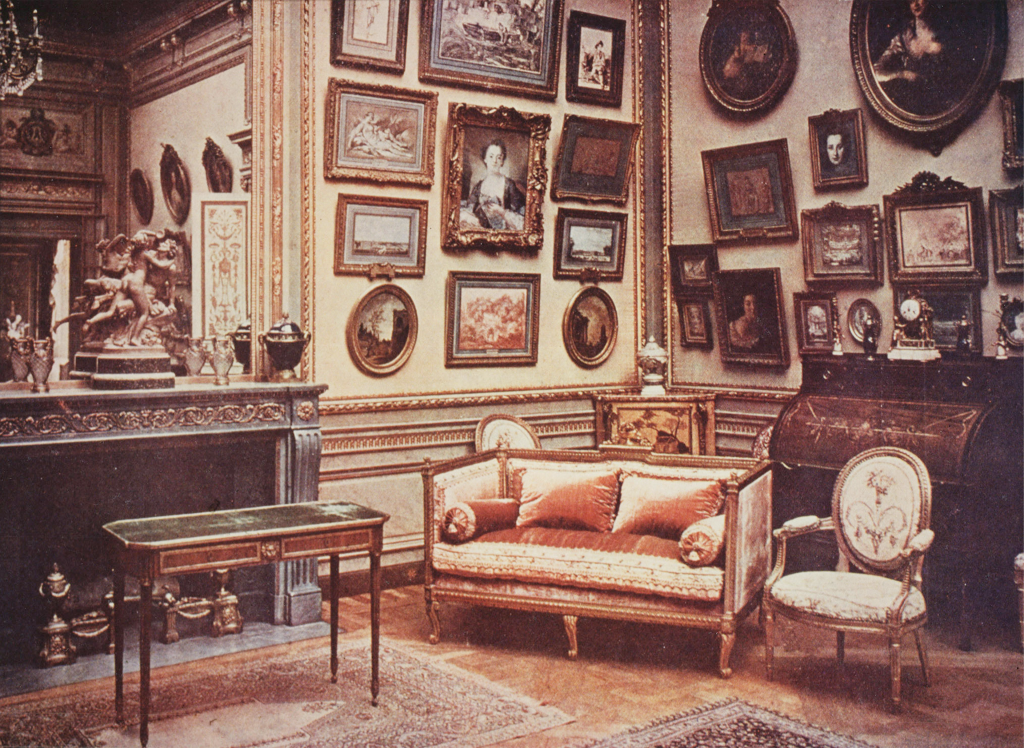
There was renewed interest in the neo-Louis XVI style at the start of the twentieth century, as seen in the collections of Moïse de Camondo and the couturier Jacques Doucet, dedicated to eighteenth-century furniture and objets d’art, and the theater arts. In the field of fashion, designers like Charles Frederick Worth and Doucet gave the neoclassical style a new lease of life with their printed fabrics and embroidery. The style has also an influence on the costumes from La Pompadour, a play by Émile Bergerat (1901).
A typology to match the female silhouette
As a crossover between a piece of jewelry and a timepiece, the pendant watch also evoked the new female silhouette. With its casing and lengthy chain, it formed a long necklace that was worn over turn-of-the-century high-collared dresses that gave women a slender silhouette, as well as over Paul Poiret’s high-waisted dresses.
The chatelaine watch in the 1920s
The pendant watch dominated Van Cleef & Arpels’ watchmaking production throughout the first decade of the twentieth century before giving way to chatelaine and bracelet watches during the following decade.
To go deeper
